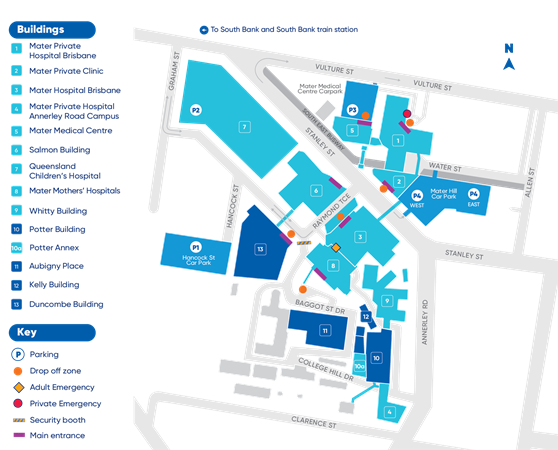Colonoscopy

What is a colonoscopy?
A colonoscopy is a procedure where the Gastroenterologist (specialist doctor) looks at the inside of the large bowel (colon) using a special camera called a colonoscope.
A mild general anaesthetic will usually be used for this procedure. The endoscope is a long flexible tube that has a light and a camera on the end of it.
For this procedure, the endoscope is inserted into the bottom (anus) and then slowly advanced along the large bowel. The bowel is closely examined and, if necessary, biopsies (small tissue samples) are taken for testing.
The main reasons for this procedure are to investigate abdominal pain, diarrhoea or bleeding from the bowel.
There is usually preparation required for this procedure, which should have been already discussed with you by your doctor.
How long will it take?
The procedure itself will take about 40 minutes. Your child will then go to the recovery room. Therefore your child will be away from you for approximately one hour. Your child will then be required to stay in the Day Unit for approximately one hour following the procedure.
When can my child eat and drink again?
If your child is awake on return to the Day Unit, they can have clear fluids immediately (breast fed babies can have a breast feed). A light diet will be offered when fully awake.
Care following the procedure
Diet and fluids
Encourage normal diet and fluids once home unless otherwise directed by your doctor.
Nausea and vomiting
It is not uncommon for children to vomit once returning from hospital. If your child is vomiting, give sips of clear fluids, try a piece of dry toast or a cracker biscuit and increase amounts as tolerated until the vomiting settles. If vomiting continues seek medical advice.
Pain
Your child may have a sore throat after the procedure due to the breathing tube. Abdominal (tummy) pain and bloating are common following the procedure.
If the pain is mild, rest and have sips of clear fluids until feeling better. Give your child some paracetamol to relieve this discomfort. Follow the instructions on the product packaging as required. If your child has severe abdominal pain or bloating that is not relieved by paracetamol or a significant amount of blood in your child’s stool, you should seek medical assistance.
Activity
Your child should rest at home under your care for the remainder of the day. Normal activities such as school and kindy can resume the following day.
Where appropriate, young adults must not drive a car or make important decisions for the rest of the day.
Follow up
Your doctor will discuss the required follow up plan with you before you leave.
Points to remember
Please seek medical advice for the following:
- if your child has vomited more than two to three times
- bowel actions with a more significant amount of blood
- severe tummy pain or bloating
- a high temperature (above 38 degrees Celsius).
Remember if your child has severe abdominal pain or bloating that is not relieved by paracetamol or a significant amount of blood in your child's stool, you should seek medical assistance.
Emergency contact
To ensure your child receives the best possible care in an emergency, you should call 000 or go to your closest hospital that treats children.
If you have any concerns or questions please contact your doctor.
Contact Mater Children’s Private Brisbane
Salmon Building,
Raymond Terrace,
South Brisbane QLD 4101
Telephone: 07 3163 8111

Mater acknowledges consumer consultation in the development of this patient information.
Mater Doc Num: PI-CLN-470006
Last modified 16/10/2019.
Consumers were consulted in the development of this patient information.
Last consumer engagement date: 22/6/2015
For further translated health information, you can visit healthtranslations.vic.gov.au/ supported by the Victorian Department of Health and Human Services that offers a range of patient information in multiple languages.